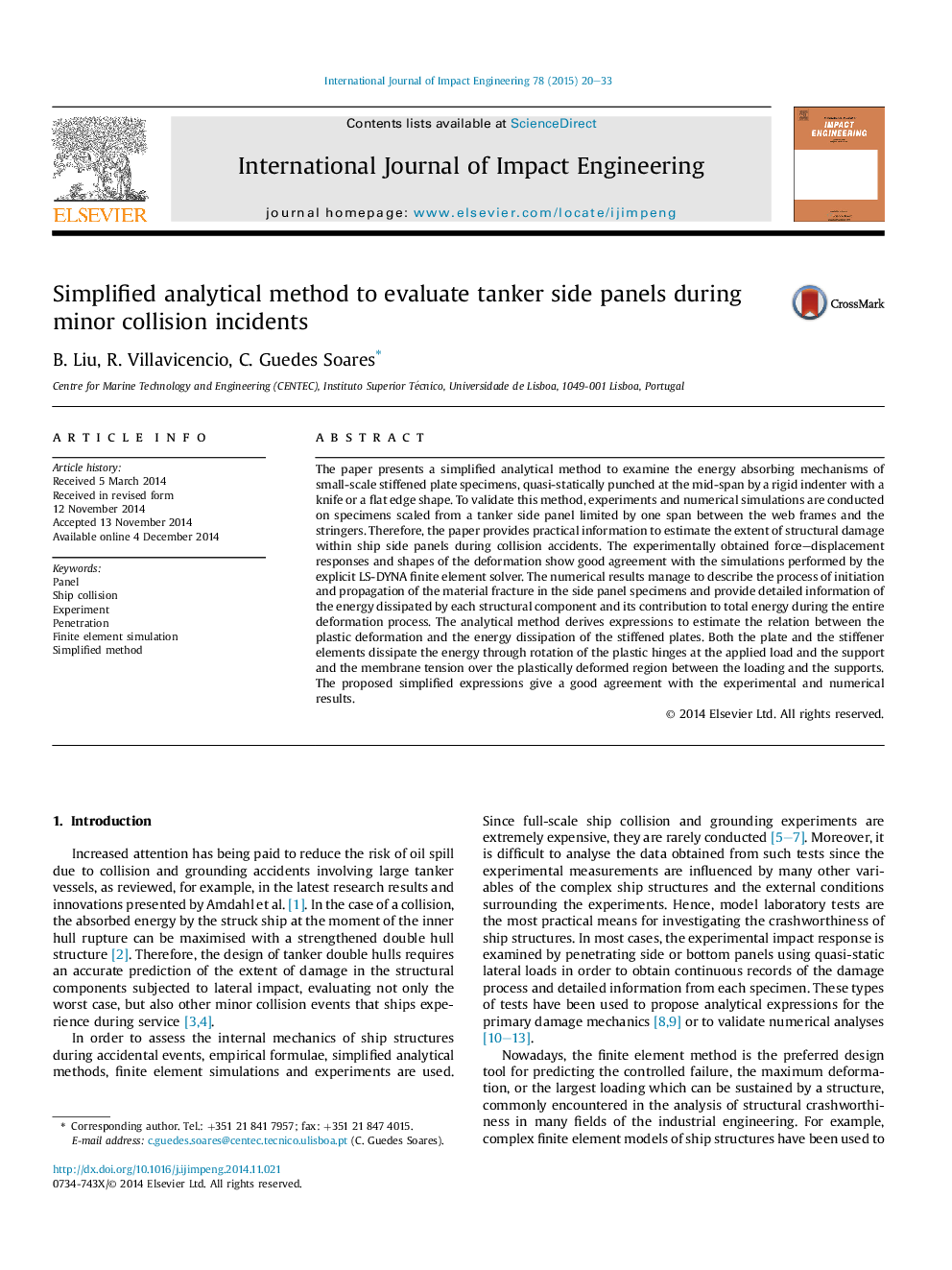| Article ID | Journal | Published Year | Pages | File Type |
|---|---|---|---|---|
| 782927 | International Journal of Impact Engineering | 2015 | 14 Pages |
•Presents a simplified method to examine the energy absorption of stiffened plates.•To validate this method, experiments and numerical simulations are conducted.•Estimates the structural damage within ship side panels during collision accidents.•The numerical results describe the process of crack initiation and propagation.•The analytical method estimates the energy dissipation of stiffened plates.
The paper presents a simplified analytical method to examine the energy absorbing mechanisms of small-scale stiffened plate specimens, quasi-statically punched at the mid-span by a rigid indenter with a knife or a flat edge shape. To validate this method, experiments and numerical simulations are conducted on specimens scaled from a tanker side panel limited by one span between the web frames and the stringers. Therefore, the paper provides practical information to estimate the extent of structural damage within ship side panels during collision accidents. The experimentally obtained force–displacement responses and shapes of the deformation show good agreement with the simulations performed by the explicit LS-DYNA finite element solver. The numerical results manage to describe the process of initiation and propagation of the material fracture in the side panel specimens and provide detailed information of the energy dissipated by each structural component and its contribution to total energy during the entire deformation process. The analytical method derives expressions to estimate the relation between the plastic deformation and the energy dissipation of the stiffened plates. Both the plate and the stiffener elements dissipate the energy through rotation of the plastic hinges at the applied load and the support and the membrane tension over the plastically deformed region between the loading and the supports. The proposed simplified expressions give a good agreement with the experimental and numerical results.
